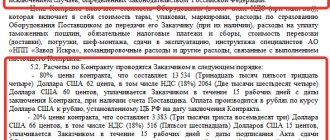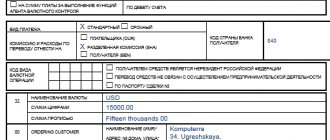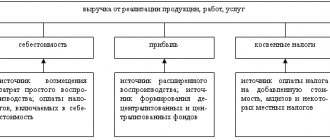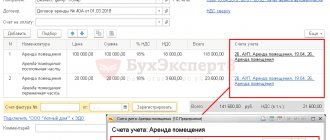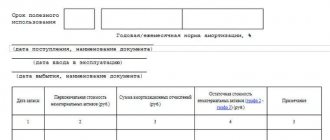Transactions with foreign currency have certain accounting specifics. It can be difficult for an accountant, especially if such transactions are carried out rarely or for the first time. We will try to clearly explain how, by whom, with the help of what transactions such accounting is carried out, what is its complexity, and what should you pay attention to when generating accounting data.
Question: How to record transactions for the sale of foreign currency at a rate lower than the rate established by the Bank of Russia on the date of sale? The organization's foreign currency account received foreign currency earnings in the amount of 20,000 euros from a foreign buyer. The following month, the organization sold the entire amount received to the authorized bank. The currency was purchased by the bank at the rate of 74.4 rubles/euro, the corresponding amount in rubles was credited to the organization’s current account on the day the currency was written off. The organization prepares interim financial statements on the last day of each calendar month. The euro exchange rate established by the Bank of Russia was (conditionally): - on the date of receipt of the currency - 74.3 rubles/euro; — as of the reporting date — 75.0 rub/euro; — on the date of currency sale — 74.6 rubles/euro. The organization uses the accrual method of tax accounting. View answer
The regulatory framework for currency accounting in the Russian Federation is quite extensive. First of all, the accountant should pay attention to three documents: Federal Law-402 dated 06/12/11 “On Accounting”, Federal Law-173 dated 10/12/03 “On Currency Regulation and Control” and PBU 3/2006 on the rules for accounting for objects Accounting instruments valued in foreign currency.
foreign currency transactions on spot terms reflected in accounting ?
Who keeps track of currency?
Currency records are maintained by participants in foreign exchange transactions who are legally entitled to them. Currency transactions between residents and non-residents can be carried out an unlimited number of times, but they are prohibited between residents.
Question: How to reflect in an organization’s accounting transactions for the acquisition of foreign currency at a rate exceeding the rate established by the Bank of Russia? The organization purchased 20,000 euros from an authorized bank at the rate of 74.2 rubles/euro. Funds for the purchase of currency are transferred from the organization's current account, the purchased currency is credited to the organization's foreign currency account. The currency was used for settlements with a foreign supplier in the month following the month of its purchase. The organization prepares interim financial statements on the last day of each calendar month. The euro exchange rate established by the Bank of Russia was (conditionally): - on the date of acquisition of the currency - 73.5 rubles/euro; — as of the reporting date — 75.0 rub/euro; — on the date of transfer of foreign currency funds to the counterparty — 74.6 rubles/euro. The organization uses the accrual method of tax accounting. View answer
There are, however, exceptions to this rule. For example, the following are allowed:
- currency transfers from resident to resident or in the accounts of the same resident if they are opened abroad;
- with the participation of residents and authorized banks;
- settlements and payment for services in foreign currency during international transportation;
- transactions with external securities at auction;
- expenses for business trips outside the Russian Federation, etc.
This is stated in Art. 6, 9 FZ-173.
How to take into account transactions on a foreign currency account and revalue balances on it ?
Transfer of funds from a transit account to a current currency account, what is the transaction?
Now about the transfer from a transit account to a current account. Such a transfer is impossible, just as it is impossible to transfer, for example, goods from a warehouse to a current account. Currency can be sold, and the proceeds from its sale accepted into a current account. In principle, you indicated the correct postings.
However, I did not use these because replacing a currency with its ruble equivalent at the Central Bank exchange rate does not create income/expense. And in your postings there is both income and expense. Income and expenses from the sale of currency are generated when the sales rate deviates from the Central Bank rate.
To identify this income/expense, I used account 57; by the way, it is also useful for reflecting the time gap between writing off currency and receiving rubles. And then the account balance 57 was transferred to account 91.
3 and 12 PBU 9/99). Record the receipt of foreign currency earnings in this case as follows.
On the date of payment: Debit 52 sub-account “Transit currency account” Credit 62 sub-account “Settlements on advances received” - an advance payment was received in foreign currency; Debit 52 sub-account “Current foreign exchange account” Credit 52 sub-account “Transit foreign currency account” – currency is transferred to the current foreign currency account.
Accounting for currency transactions (PBU, postings)
Analytical accounting for account 52 must be maintained for each account opened for storing money in foreign currency. This follows from the Instructions for the chart of accounts. In some cases, an organization may not use bank accounts, but receive foreign currency earnings in cash (paragraph 3–8, part 2, article 14
Attention
Law of December 10, 2003 No. 173-FZ). For information on how to reflect such transactions in accounting, see How to carry out foreign exchange cash transactions. Purchasing currency An organization has the right to purchase foreign currency only through an authorized bank (Art.
11
Law of December 10, 2003 No. 173-FZ). To purchase foreign currency, draw up a payment document (clause 3.1 of Bank of Russia Instruction No. 138-I dated June 4, 2012). A single form of payment document is not established by law.
As a rule, banks have the necessary forms.
Accounting for funds in foreign currency
Write-off of foreign currency funds to the supplier to pay for the delivery Bank statement 66 (67) 52 Reflects the return of borrowed funds and payment of interest in foreign currency 75 (76, 79) 52 Reflects transfers of foreign currency funds to other counterparties 52 62 Receipt of foreign currency funds from buyers for goods (services) sold 52 66 (67) Reflection of receipts of borrowed funds in foreign currency 52 75 (76.79) Receipt of foreign currency funds from other counterparties 50 52 Receipt of foreign currency funds from the bank to the cash desk Receipt cash order 71 50 Reflects the issue of foreign currency funds to an accountable person Outgoing cash order 50 71 Reflected return unused currency funds by an accountable person to the cash register Receipt cash order 52 50 Delivery of currency funds from the cash desk to the bank Outgoing cash order Accounting for currency transactions on account 52 using the example with postings Let's consider an example of the sale of foreign currency.
Transfer from transit to foreign currency account
On the date of transfer of ownership: Debit 62 subaccount “Settlements for shipped goods (works, services)” Credit 90-1 – revenue from the sale of goods (performance of work, provision of services) is reflected; Debit 62 subaccount “Settlements for advances received” Credit 62 subaccount “Settlements for shipped goods (works, services)” – the prepayment received is credited. This posting scheme follows from paragraph 12 of PBU 9/99 and the Instructions for the chart of accounts (accounts 52, 62, 68, 76, 90).
Regardless of the terms of the agreement in accounting, the organization must revaluate claims (liabilities) in foreign currency. But determine advances issued (received) at the Bank of Russia exchange rate on the date of transfer of the prepayment and do not overestimate them in the future (clause
10 PBU 3/2006).
How to determine the date?
Federal Law 402 (Article 12) states that all accounting and reporting objects must be expressed exclusively in rubles, and assets calculated in foreign currency must be recalculated into rubles. According to PBU, such recalculation is carried out at the rate of the Central Bank or by agreement of the parties to the transaction.
The exchange rate of any monetary unit constantly fluctuates, therefore, determining the correct date of conversion is one of the main tasks of an accountant.
PBU sets the date depending on the nature of the transaction:
- cash, banking volumes of currency - at the time of transactions and at the reporting date, as well as following changes in the exchange rate (if necessary);
- for reporting, all currencies: non-cash, cash, are recalculated on the reporting date;
- Intangible assets, fixed assets, inventories, other non-monetary assets - as of the date of the transaction and their registration;
- foreign currency income and expenses - as of the date of recognition (travel expenses in foreign currency are recalculated on the date of signing the advance report);
- costs for VNA - as of the date of recognition of costs that determine these assets, their value.
In addition, when receiving a foreign currency advance payment or deposit, the amount is taken into account at the exchange rate at the time of its receipt, and when paid - on the date when the payment was made.
According to PBU, paragraph 10, non-current and other assets, except cash, as well as advances and prepayments after being reflected in accounting, are not subject to recalculation due to exchange rate fluctuations.
Important! If the official exchange rate changes insignificantly and a large number of similar currency transactions take place, the average rate for a month or for a shorter period can be used for recalculation (clause 6 of PBU 3/2006).
Accounting and postings
One of the important concepts of currency accounting is exchange rate difference. It appears when recalculating the value of assets in foreign currency, for different dates, into rubles. At the end of the year, it is included in the income (expenses) of the company. Exchange rate differences on founders' contributions affect the amount of additional capital and do not relate to financial results. Differences in the organization's assets located abroad are taken into account in the same way - in additional capital, if, according to the legislation of the country of location, they have been recalculated. The Central Bank exchange rate at the time of recalculation is taken into account.
Exchange rate differences on debt (both receivables and payables) usually arise due to the time interval when the debt is recorded in accounting and when it is paid. In addition, it occurs when funds in foreign currency are converted at the cash desk, in a bank account, in accordance with the norms of currency legislation, into rubles.
When reporting on foreign currency assets, the ruble meter is used. If in the country where a Russian organization operates, reporting is required in foreign currency, it is also duplicated in foreign currency.
Currency accounting presupposes, first of all, the presence of account 52 “Currency account,” which is similar in meaning to the ruble settlement account. Subaccounts for it are opened taking into account account data: within the country and abroad. In addition, subaccounting of the following order can take into account assets depending on the name of the currency or divide transactions into:
- current;
- transit;
- special transit accounts.
The current account involves recording revenue in foreign currency, bank interest, and other ordinary foreign exchange transactions permitted by law. A special-purpose transit account is opened by an authorized banking institution independently for the client. It takes into account the purchase and sale of currency.
A regular transit account in foreign currency is currently maintained to reflect on it funds for which the bank has not yet received information confirming their “origin”, their relationship to a specific legal agreement.
Account 55 can occasionally be involved in foreign exchange transactions, if we are talking about currency on letters of credit, deposits, and other forms of payment, except bills. On account 57, the legislator allows you to reflect currency amounts for sale, rubles for the purchase of currency before the moment of purchase, etc.
The following entries are most often used in currency accounting:
- D50 (52) K52 (50) – receiving currency at the cash desk and returning it to the bank.
- D71 (50) K50 (71) – receipt by the “accountable” of currency from the cash register and return of the unused balance.
- D52 K62, 66, 67, 76, etc. – receiving currency to the account from buyers, in the form of a loan, other income.
- D57 K52, D51 K57 – currency transfer and proceeds from the sale of currency credited to the current account.
- D57 K51, D52 K57 – “reverse” operation of purchasing currency for rubles and transferring it to a foreign currency account.
- D91(57) K57(91) – fin. the result of transactions with currency.
- D60, 66, 67, 76, etc. K52 – payment in foreign currency to suppliers, payments on loans, other transactions with counterparties.
Let's consider what has been said using a conditional example. A legal entity sells $1,100 to a bank at an exchange rate of 63 rubles/dollar. At the time of sale, the exchange rate was 64 rubles/dollar. The banking institution's commission is 1,300 rubles.
Actions:
- 1100 * 63=69300 rub.
- 1100 * 64=70400 rub.
- D57 K52 - 70400.00 - funds were written off from the foreign currency account.
- D51 K57 - 69300.00 - funds were credited for the currency sold.
- 64 — 63 = 1
- 1 * 1100 = 1100 rub.
- D91 K57 - 1100.00 - negative exchange rate difference on sale.
- D91 K51 - 1300.00 - bank commission paid.
How to reflect the receipt of money from a transit account to a current account in 1c
After transfer, the bank transfers the balance of the currency from the transit account to the current currency account.
When conducting transactions with foreign currency, the following legislation must be taken into account: It is important to note that foreign exchange transactions are recorded only in rubles, since foreign exchange rates are constantly changing.
It is necessary to pay special attention to the date of recalculation of foreign currency into rubles.
Accounting for cash in foreign currency Important Debit 52 Credit 57–29,700 rub.
(1000 USD × 29.70 rubles/USD) – currency is credited to the organization’s foreign currency account; Debit 91-2 Credit 57–200 rub. – commission fee is withheld by the bank; Debit 91-2 Credit 57–800 rub.
(1000 USD × (30.50 rubles/USD – 29.70 rubles/USD)) – reflects the difference between the currency purchase rate and the Bank of Russia rate; Debit 51 Credit 57–300 rub. (31,000 rubles – 1000 USD × 30.50 rubles/USD – 200 rubles) – the balance of unspent money is returned.
Reflection in 1C of transfer of funds from transit to current
n. Current legislation obliges organizations to revaluate currency balances into rubles at the established rate.
If an exchange rate difference arises in a positive direction for you, it is reflected as other income in accounting and as non-operating income in NU. The amount of the negative difference is taken into account in the same way, only for expenses. In this article, we will use an example to look at how currency transactions are carried out in 1C 8.3 and consider their transactions, namely the purchase and sale of currency.
Attention In particular, from:
- on what date is ownership of the goods transferred or when the work (services) are considered accepted by the customer (on the date of shipment, the date of signing the act, the date of payment, the date of registration of the customs declaration, etc.);
- Does the contract provide for prepayment?
If title passes on the date of shipment (a date other than the date of payment) and the contract provides for subsequent payment, make the following entries.
Transfer of funds from transit to current currency posting account
To prevent this money from being lost or forgotten, an intermediate account is used. 57 “Translations on the way.”
After the organization has transferred the required amount of money to the bank in rubles, the bank purchases the required amount of foreign currency and transfers it to the enterprise’s foreign currency account (the currency accounted for is converted into rubles at the rate of the Central Bank of Russia effective on the date of enrollment). Accounting entry D52 K57.
Account balances
57 are transferred back to the account (posting D51 K57).
Purchased foreign currency is accounted for at the official exchange rate of the Central Bank of Russia in effect on the date of its receipt.
Transfers between bank accounts in 1C: Enterprise Accounting 8 edition 3.0
If transfers usually take two days or more, then it is necessary to generate transactions using this account. Let’s first consider the first option, when funds are transferred day after day.
We go to the accounting policy setting form; to do this, open the “Main”, “Settings”, “Accounting Policy” tab.
Uncheck the box “Account 57 “Transfers in transit” is used when moving funds.
Postings for the movement of funds are generated by the document “Write-off from the current account”.
Open the “Bank and cash desk” tab, “Bank statements”, click on the “Write-off” button to create a document and fill in the following fields: - type of operation “Transfer to another account” - date - amount of the money transfer - recipient’s account to which the funds are transferred - debit account 51 will be filled in automatically - cash flow item “Transfers between bank accounts” - purpose of payment -
1C: Accounting 8.2 - Sale of currency (without using account 57 “Transfers in transit”)
Receipts from the sale of foreign currency are recognized as other income of the organization (clause 7 of PBU 9/99), and expenses associated with the sale of foreign currency are recognized as other expenses (clause
11 PBU 10/99). If the currency selling rate deviates from the Bank of Russia rate, the following arise in accounting:
- income in the form of a positive exchange rate difference if the Bank of Russia exchange rate is lower than the foreign exchange selling rate.
- expenses in the form of negative exchange rate differences if the Bank of Russia exchange rate is higher than the rate at which the currency was sold;
The bank's commission for the sale of foreign currency is also included in other expenses (clause 11 of PBU 10/99). For profit tax purposes on the date of sale of currency (clause
2 tbsp. 250, pp. 6 clause 1 art. 265, para. 272 Tax Code of the Russian Federation):
- the positive difference is in non-operating income.
- the negative difference is included in non-operating expenses;
How to reflect the receipt and use of currency and foreign exchange earnings in accounting
For information on how to reflect such transactions in accounting, see
As a rule, banks have the necessary forms.
In the payment document, before the text part in the “Purpose of payment” detail, indicate the code of the type of transaction from the list of currency and other transactions (clause 3.2 of the Bank of Russia Instruction dated June 4, 2012
No. 138-I). When purchasing currency, indicate the currency transaction code 01 030 (Appendix 2 to the Bank of Russia Instructions dated June 4, 2012
No. 138-I). For the purchase of foreign currency for an employee’s business trip, see
To reflect the currency purchase transaction in accounting, you can use account 57 “Transfers in transit.”
Selling currency in 1C 8.3: example, transactions
In this article, read how to carry out a currency sale operation in 1C Accounting 8.3 in 5 steps.
Click the OK button (5) to save the changes.
Source: https://dtp-sovetnik.ru/kak-otrazit-postuplenie-deneg-s-tranzitnogo-scheta-na-tekuschij-v-1s-96930/
Briefly
- When accounting for transactions with currency, it is most important to determine the date of its conversion into the ruble equivalent and the exchange rate difference as a result of the conversion.
- Accounting for such transactions is kept on accounts 52, 57, and less often on account 55. They correspond with accounts payable to suppliers, customers, credit accounts, etc.
- Exchange rate differences, positive or negative, affect the overall financial result; in other cases concerning settlements under the charter capital, the company’s foreign assets go into additional capital.

